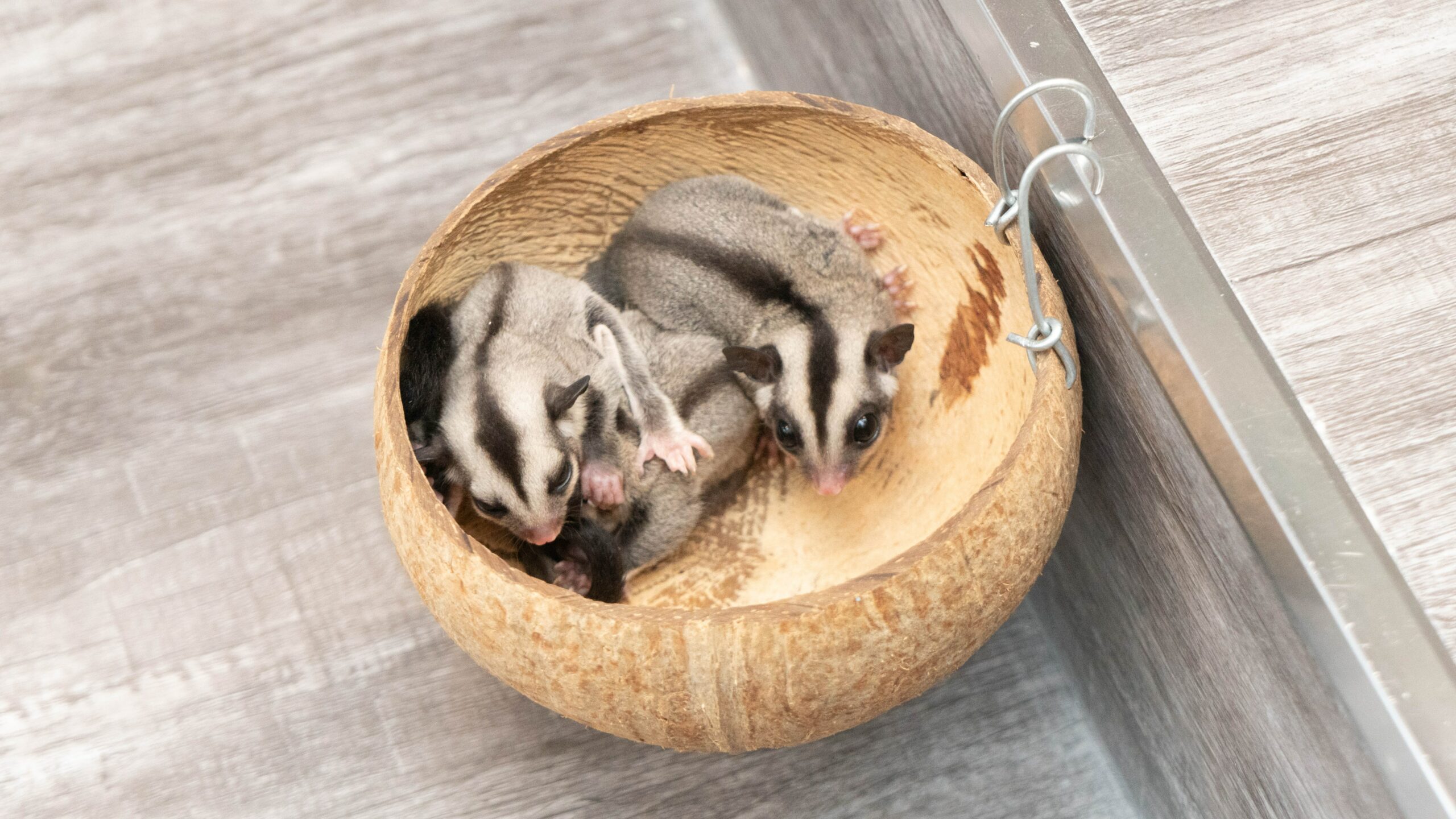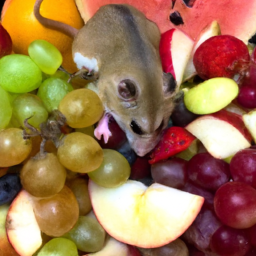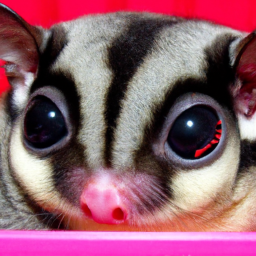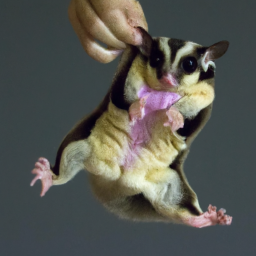Can You Have A Sugar Glider As A Pet
Sure, you might have wondered whether it’s possible to have a sugar glider as a pet. In this article, we’ll explore the fascinating world of sugar gliders and whether they make good pets. You’ll learn about their unique characteristics, their care requirements, and the legal considerations associated with keeping them. So, let’s begin and find out if a sugar glider is the right pet for you.
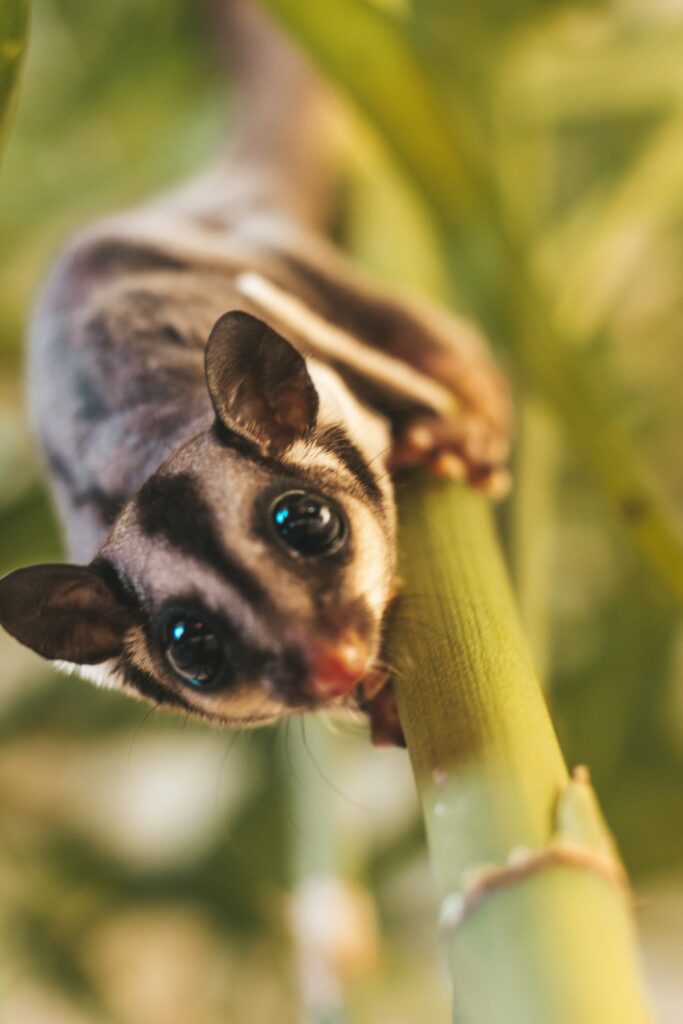
Can You Have A Sugar Glider As A Pet
If you’re a fan of exotic animals and are considering adding a unique and adorable pet to your family, you may have come across the idea of owning a sugar glider. These small, nocturnal marsupials have gained popularity in recent years as pets due to their playful nature and cute appearance. But before making the decision to bring a sugar glider into your home, it’s important to understand their physical characteristics, habitat, and natural behaviors.
Physical characteristics of sugar gliders
Sugar gliders are small animals, measuring approximately 5-6 inches in length, excluding their tail. They generally weigh between 3.5 to 5.3 ounces. One of the most striking features of these creatures is their large, membranous wings that enable them to glide effortlessly. These furry gliders have a characteristic patagium, a skin flap that extends from their wrist to their hind legs and tail.
Sugar gliders have soft and thick fur, which is usually gray or silver in color with a cream-colored belly. Some variations also exist, with different shades of brown and even albino sugar gliders available in the pet market. Their large eyes, rounded ears, and bushy tail add to their charm.
Habitat and natural behavior of sugar gliders
Sugar gliders are native to Australia, New Guinea, and Indonesia. In the wild, they inhabit forests and woodlands, where they spend their days nesting in tree hollows and foraging for food. These agile creatures are excellent climbers and are capable of gliding for long distances, making use of their patagium.
Social animals by nature, sugar gliders form colonies in the wild and rely on each other for companionship and grooming. They are primarily nocturnal, meaning they are most active during the night and sleep during the day. Their diet consists of a variety of nectar, fruit, insects, tree sap, and even small vertebrates.
Rules and Regulations for Owning a Sugar Glider as a Pet
Before bringing any pet into your home, it is crucial to research and ensure that you are aware of the rules and regulations surrounding their ownership. This is particularly important for exotic pets like sugar gliders.
Research local laws and regulations
Laws regarding the ownership of sugar gliders can vary from country to country and even within different states or regions. It is essential to research and understand the specific laws governing the ownership of these animals in your area. Some places may restrict or ban the ownership of sugar gliders altogether, while others may require permits or licenses.
Permits and licenses required
In places where sugar gliders are legal to own as pets, permits or licenses may be necessary. These documents are typically obtained through the appropriate government agency responsible for wildlife or exotic animal control. The requirements for obtaining such permits may vary, but they often include demonstrating suitable housing, knowledge of the animal’s care, and sometimes a veterinary inspection.
Health and safety requirements
To ensure the well-being of sugar gliders as pets, certain health and safety requirements must be met. This includes providing a suitable living environment, proper nutrition, veterinary care, and socialization. Additionally, it is essential to keep in mind any potential risks or dangers associated with owning a sugar glider, such as hazards in the house or the potential for escape.
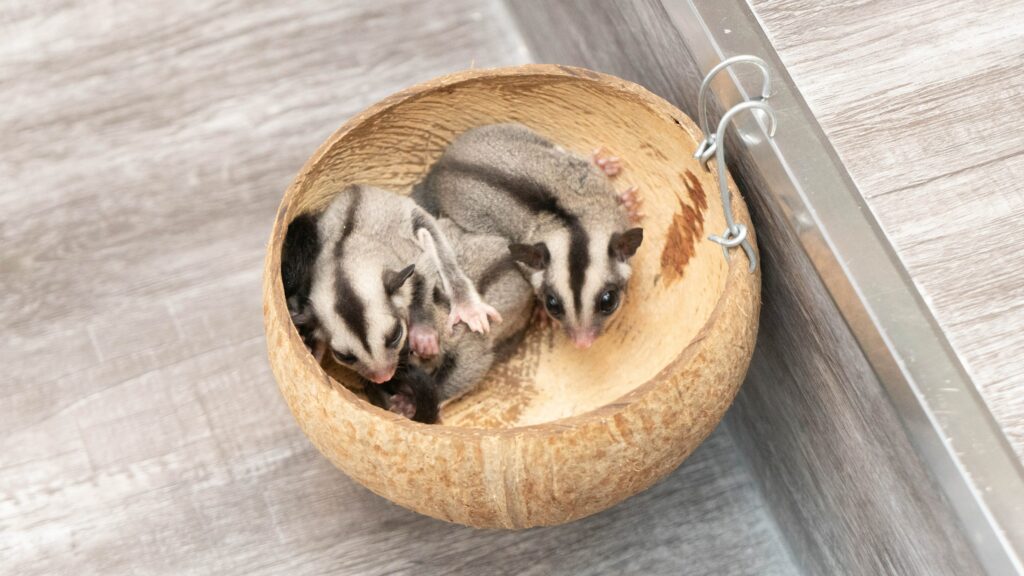
Pros and Cons of Owning a Sugar Glider as a Pet
Whether or not owning a sugar glider is the right choice for you and your family ultimately depends on your lifestyle, preferences, and ability to meet the specific needs of these unique pets. To help you make an informed decision, let’s explore some of the pros and cons of owning a sugar glider.
Benefits of owning a sugar glider
- Adorable companionship: Sugar gliders are undeniably cute and can form strong bonds with their owners, providing constant companionship.
- Interactive play: These energetic and playful creatures love interactive playtime, which can be entertaining and rewarding for both you and the glider.
- Low maintenance: Sugar gliders are relatively low maintenance pets. They don’t require daily walks or grooming, and their small size makes them easy to care for.
- Unique bonding experience: Owning a sugar glider allows you to experience a unique and often rewarding bond with an exotic animal.
- Educational opportunity: Having a sugar glider as a pet can be an excellent educational experience for children and adults alike, teaching responsibility and conservation.
Challenges and drawbacks of owning a sugar glider
- Nocturnal habits: Sugar gliders are nocturnal animals, which may not be suitable for everyone. They are most active during the night, which can interrupt your sleep schedule if you are a light sleeper.
- Commitment and lifespan: Sugar gliders have a relatively long lifespan for small mammals, typically living for 12 to 15 years in captivity. This requires a long-term commitment to their care and well-being.
- Specialized needs: Sugar gliders have specific dietary requirements, as well as needs for proper housing, temperature, and humidity control. Meeting these needs can require additional time, effort, and resources.
- Socialization needs: Sugar gliders are highly social animals and require consistent socialization and interaction with their owners to thrive. This can be challenging for individuals with busy lifestyles or limited time for bonding.
Housing and Cage Requirements
Providing a suitable living environment is crucial for the well-being of your pet sugar glider. Here are some things to consider when setting up their cage:
Size and design of the cage
Sugar gliders are highly active animals and require ample space for exercise and play. The cage should be large enough to allow them to stretch their wings fully and move around comfortably. A minimum cage size of 24 inches wide, 24 inches deep, and 36 inches tall is recommended for a single sugar glider, with additional space for each additional glider.
Necessities for a sugar glider’s cage
In their cage, sugar gliders require the following essentials:
- Nesting area: Provide a cozy, enclosed space with a nest box or pouch where your glider can sleep during the day.
- Perches: Offer multiple perches at varying heights to simulate their natural climbing behavior.
- Toys and enrichment: Sugar gliders are active and curious creatures. Providing toys, tunnels, and other forms of enrichment will help keep them mentally stimulated.
- Food and water containers: Use sturdy and secure containers to hold their food and water, ensuring they have access to fresh water at all times.
Temperature and humidity control
Sugar gliders are extremely sensitive to temperature and humidity. Ensure that their living environment remains within the recommended ranges of 70-90 degrees Fahrenheit (21-32 degrees Celsius) and a humidity level of 50-70%. Placing their cage away from drafts and direct sunlight is important to maintain a stable environment.

Feeding and Diet for Sugar Gliders
A proper diet is crucial for the health and well-being of your sugar glider. While their natural diet consists of nectar, fruit, insects, and tree sap, replicating these exact food sources may not always be possible as pet owners. However, there are various commercially available diets and food options specifically formulated for sugar gliders that can meet their nutritional needs.
Types of food sugar gliders can eat
A well-balanced diet for a sugar glider typically includes the following:
- Commercially available diets: Pelleted or powdered diets specifically designed for sugar gliders provide a convenient and well-rounded nutritional option.
- Fresh fruits and vegetables: Offer a variety of fresh fruits and vegetables such as apples, grapes, bananas, carrots, and leafy greens.
- Protein sources: Include small amounts of lean animal protein, such as cooked chicken or scrambled eggs, as a supplement to their diet.
Recommended diet for sugar gliders
The exact proportions and ratios of food will depend on the specific diet you choose to follow for your sugar glider. It is essential to consult with a veterinarian experienced in exotic animal care to determine the best diet for your glider’s specific needs.
Socialization and Bonding with your Sugar Glider
Sugar gliders are highly social animals that thrive on interaction and bonding with their owners. Here are some tips to help strengthen the bond with your furry friend:
Importance of socialization
To ensure a happy and well-adjusted sugar glider, consistent socialization is crucial. They rely on social bonds for their emotional well-being, and regular interaction helps prevent stress and loneliness.
Methods for bonding with your sugar glider
- Spend quality time together: Set aside regular daily bonding time with your sugar glider to build trust and create a routine.
- Use positive reinforcement: Reward your sugar glider with treats and praise when they exhibit positive behavior, such as coming when called or willingly climbing onto your arm.
- Handle with care: Be gentle when handling your glider and avoid sudden movements or loud noises that may startle them.
- Provide opportunities for exploration: Offer a safe space outside of their cage where they can explore and interact with their environment under supervision.
Training and interaction
Sugar gliders can be trained to perform simple tricks and behaviors. Training sessions should be short, positive, and rewarding for both you and your glider. Use treats to reinforce desired behaviors and gradually increase the complexity of the tasks over time.
Healthcare and Veterinary Care for Sugar Gliders
Just like any other pet, sugar gliders require regular veterinary care to ensure their well-being. It is crucial to find a veterinarian experienced in exotic animal care who can provide the necessary medical attention and advice.
Finding a specialized veterinarian
Sugar gliders have unique health needs, and it is important to find a veterinarian who specializes in exotic animals or has experience with sugar gliders specifically. They will be able to provide the necessary vaccinations, health check-ups, and address any potential health concerns.
Common health issues in sugar gliders
Some common health issues for sugar gliders include:
- Dental problems: Gliders have teeth that continuously grow, and dental issues can occur if they don’t have suitable items to chew on.
- Nutritional deficiencies: A diet lacking in essential nutrients can lead to health problems. Ensure you are feeding your glider a balanced and appropriate diet.
- Parasites and infections: Sugar gliders can be prone to various parasites and bacterial infections. Regular veterinary care and hygiene practices can help prevent these issues.
Regular check-ups and vaccinations
Just like any other pet, sugar gliders should receive regular check-ups to monitor their overall health. Vaccinations may also be recommended by your veterinarian to protect against certain diseases or infections.
Grooming and Hygiene for Sugar Gliders
Maintaining proper grooming and hygiene practices is essential for the overall health and well-being of your sugar glider. Here are some key areas to focus on:
Bathing and cleaning routines
Sugar gliders are naturally clean animals and typically groom themselves regularly. However, it is still important to provide them with opportunities for proper hygiene. This can include providing a shallow dish of water for them to bathe in or a lightweight dust bath. Avoid using soaps or shampoos designed for humans or other animals, as they may be too harsh for sugar gliders’ delicate skin.
Dental care for sugar gliders
Sugar gliders have teeth that continuously grow, and dental problems can arise if they don’t have access to appropriate items for chewing. Providing safe chew toys, branches, or mineral blocks can help keep their teeth healthy and prevent overgrowth.
Understanding Sugar Glider Behavior
To ensure a happy and harmonious relationship with your sugar glider, it is essential to understand their behaviors and communication cues.
Communication and vocalizations
Sugar gliders communicate through a variety of vocalizations, including barking, chirping, and hissing. Barking is often used as an alarm call, while chirping is a common sound during play or exploration. Hissing may be a sign of fear or aggression.
Sleeping patterns and nocturnal behavior
As nocturnal animals, sugar gliders are most active during the night. They usually sleep during the day and become more active in the evening and throughout the night. It is important to provide them with a quiet and dark environment during their sleeping hours to ensure proper rest.
What Are the Legal Requirements and Considerations for Keeping a Sugar Glider as a Pet?
When considering keeping a sugar glider as a pet, it’s important to be aware of the legal requirements and considerations involved. It’s important to understand the sugar gliders evolution origins, their natural habitat, and dietary needs. Before bringing one into your home, research any local laws and regulations regarding ownership.
Conclusion
Owning a sugar glider as a pet can be a rewarding and unique experience for those willing to put in the time and effort to meet their specific needs. Understanding their physical characteristics, habitat, and natural behaviors is crucial before making the decision to bring one into your home. By following the rules and regulations, providing proper housing, nutrition, socialization, veterinary care, and grooming, you can create a happy and fulfilling life for both you and your pet sugar glider.
